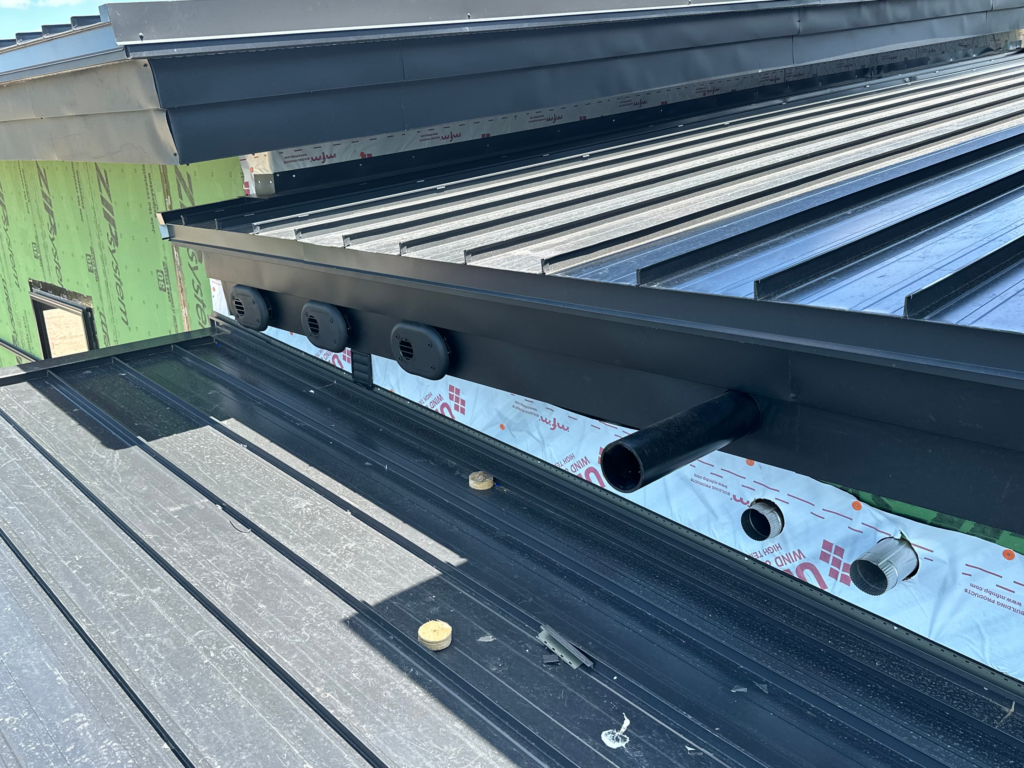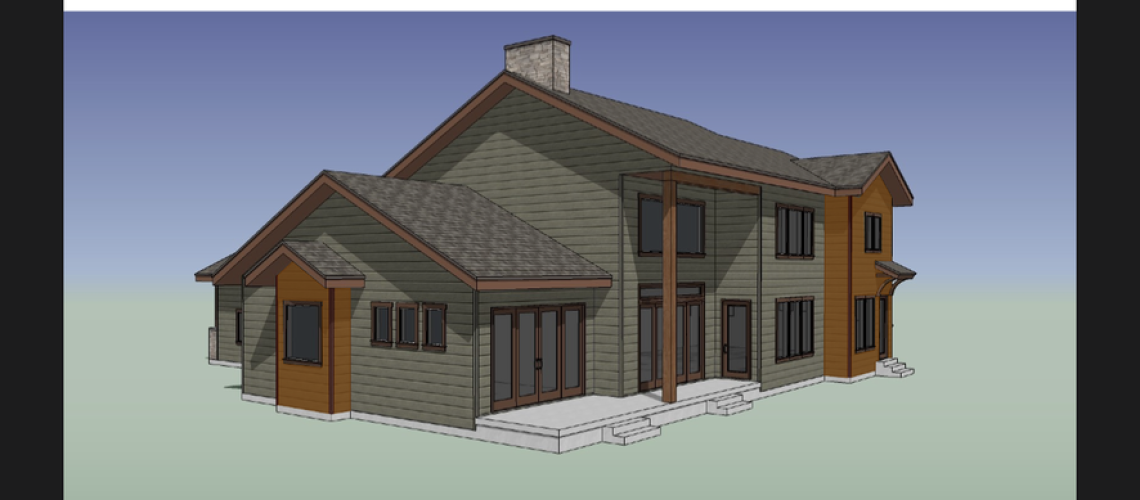Embarking on the journey of designing your custom home is an exciting endeavor that promises to bring your dream living space to life. However, this process also comes with its own set of challenges and considerations. From conceptualizing your vision to navigating the complexities of budgeting and construction, every step requires careful planning and attention to detail. In this guide, we’ll explore the entire process of custom home designing, budgeting, and finances, choosing the right custom home builder and challenges.
Defining Your Vision
As you begin the custom home building process, it’s crucial to allow yourself the freedom to dream and envision the kind of home that truly reflects your lifestyle and personality. This initial step is about tapping into your imagination and exploring the possibilities of what your dream home could be. Consider the way you live and how you want your home to support your daily routines, whether it’s cozy evenings by the fireplace, entertaining guests in a spacious kitchen, or enjoying the tranquility of a private outdoor retreat.
Brainstorming sessions with your family or partner can be invaluable during this phase, allowing you to share ideas, preferences, and even wildest dreams. From there, create a comprehensive wishlist that outlines all the features, rooms, and design elements you want to incorporate into your custom home. Think about both the big picture and the small details, considering layout, functionality, aesthetics, and special amenities. This wishlist will serve as a roadmap for the design phase, ensuring that every aspect of your dream home is accounted for and brought to life.
Budgeting And Financing
Estimating Costs is a crucial initial step in the custom home design process. It goes beyond just materials and labor; it involves considering all potential expenses, including hidden costs like permits, landscaping, and unexpected delays. Creating a detailed budget upfront is essential for keeping the project on track and avoiding financial surprises down the road.
When it comes to Financing Options, there are various avenues to explore for custom home construction. From construction loan to traditional mortgages and other forms of financing, it’s important to select the option that aligns best with your budget and long-term financial goals. By securing the right financing, you can ensure a smooth and stress-free building process, allowing you to focus on bringing your dream home to life without financial strain.
Choosing The Right Team
Selecting the right Architect and Designer is crucial as they will play a pivotal role in bringing your vision to life. Take the time to research and choose professionals who not only understand your aesthetic preferences but also share your design goals. Look for architects and designers with portfolios that resonate with your style, and ensure open communication throughout the design phase. This collaboration is essential for ensuring that your ideas are understood and translated effectively into the final design.
Equally important is Hiring a Custom Home Builder who has the experience and expertise to handle bespoke projects. Prioritize builders who have a proven track record in delivering high-quality custom homes and who understand your unique vision. A skilled builder will guide you through every step of the construction process, from site preparation to the final finishing touches. They will ensure that every detail meets your expectations and that your dream home is built to the highest standards of craftsmanship and quality. Effective communication and a collaborative approach between you, the architect, designer, and builder are key to achieving the home of your dreams.
The Design Process

In the design process of your custom home, attention to detail is key to creating a space that truly reflects your lifestyle and preferences.
Developing Floor Plans
Collaborate closely with your architect to develop floor plans that optimize space, flow, and functionality. Consider how each room will be used and ensure that the layout aligns with your daily routines and preferences. Customizing floor plan allows for a personalized touch, tailored to your family’s needs and activities. Whether it’s an open-concept kitchen for entertaining or a cozy nook for relaxation, thoughtful planning ensures that every square foot of your home is utilized effectively.
Selecting Architectural Styles
Explore a variety of architectural styles to find one that resonates with your vision for your custom home. Whether you lean towards traditional elegance, modern minimalism, or something in between, your chosen style will set the tone for the entire design. Take inspiration from architectural elements such as rooflines, windows, and facades to create a cohesive look that reflects your taste and personality. Your architect can help you navigate the possibilities and guide you towards a style that suits your aesthetic preferences.
Material And Finish Selection
Carefully curate materials and finishes that not only reflect your personal style but also ensure durability and longevity. From flooring and countertops to fixtures and hardware, every design element contributes to the overall aesthetic and functionality of your home. Consider factors such as maintenance, sustainability, and compatibility with your chosen architectural style. Whether you prefer the warmth of natural wood or the sleekness of stainless steel, selecting the right materials will enhance the beauty and functionality of your space for years to come. Your architect and designer can provide guidance on selecting materials that meet your criteria and bring your vision to life.
Incorporating Sustainability and Technology
In the quest for a truly modern and responsible home, it’s essential to integrate both Eco-Friendly Design and Smart Home Technologies into your custom home. Environmental sustainability is increasingly becoming a priority for homeowners. Incorporating sustainable practices and materials into your home design not only minimizes your environmental impact but also reduces long-term costs. Consider options such as energy-efficient appliances, solar panels, and passive design strategies like proper insulation and orientation to maximize natural light and ventilation. These choices not only contribute to a healthier planet but also create a more comfortable and energy-efficient living space for you and your family.
Embracing the latest advancements in technology can enhance the comfort, convenience, and energy efficiency of your custom home. From automated lighting and thermostats that adjust based on your preferences to security systems that offer peace of mind, smart home technologies offer modern solutions for everyday living. By integrating these innovations into your home design, you can create a truly connected and efficient living environment that adapts to your needs and lifestyle while reducing energy consumption and operating costs.
By incorporating both eco-friendly design principles and cutting-edge smart home technologies into your custom home, you not only create a space that reflects your values and preferences but also contribute to a more sustainable and comfortable future for you and your family. Working closely with your architect and builder, you can seamlessly integrate these features into your home design, ensuring a harmonious blend of style, functionality, and environmental responsibility.
Design Pitfalls To Avoid
When designing a custom home, it’s important to be aware of common pitfalls and challenges that can arise throughout the process. Be vigilant about avoiding common pitfalls such as overbuilding, neglecting functionality, or underestimating costs. Overbuilding can lead to unnecessary expenses and wasted space, while overlooking functionality may result in a home that doesn’t meet your practical needs. Underestimating costs can lead to budget overruns and delays. By staying informed and collaborating closely with your design team, including your custom builder and interior designer, you can navigate these challenges effectively and ensure a successful outcome.
Thorough planning, regular communication, and attention to detail are essential to avoid these potential pitfalls and create a home that exceeds your expectations. While it’s tempting to follow the latest design trends, it’s important to strike a balance between contemporary aesthetics and timeless appeal. Trends come and go, but a well-designed home should stand the test of time. Choose design elements, from floor plans to finishes, that will remain stylish and relevant for years to come.
Consult with your interior designer and custom builder to select materials, colors, and architectural features that blend current trends with enduring classics. By prioritizing timeless design principles, you can ensure that your custom home remains a source of pride and comfort for you and your family throughout the years.
Conclusion
Designing a custom home is a rewarding yet intricate process that requires careful planning, creativity, and collaboration. By defining your vision, securing financing, choosing the right team, and embracing sustainable and technological advancements, you can create a personalized sanctuary that reflects your unique lifestyle and preferences. As you start this journey, remember to stay flexible, communicate openly, and enjoy the excitement of bringing your dream home to life.
Ready To Build Your Dream Custom Home?
Reach out to Swager Builds today to turn your vision into reality. Our experienced team of architects, designers, and builders will guide you through every step of the process, ensuring that your home is built to the highest standards of quality and craftsmanship. From initial concept to final finishing touches, we’re here to make your dream home a reality. Contact us now to schedule a consultation and start building the home of your dreams.


